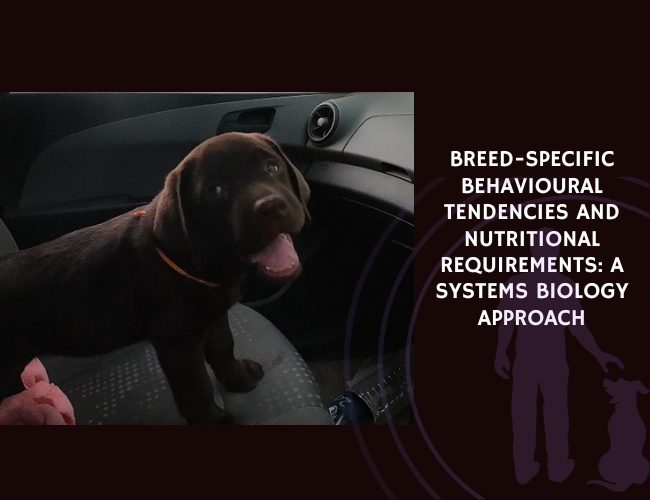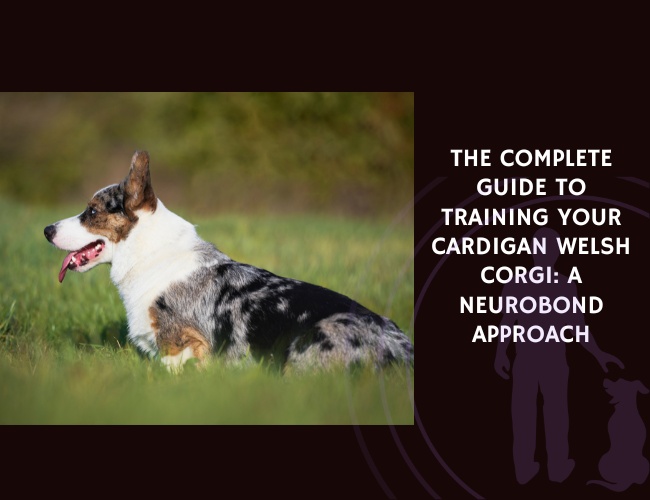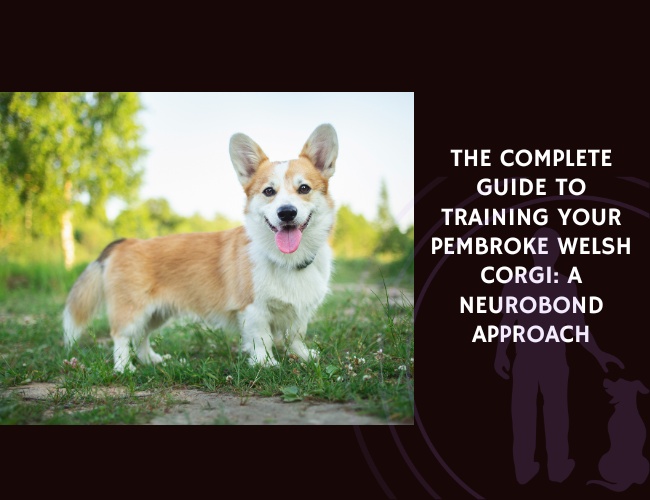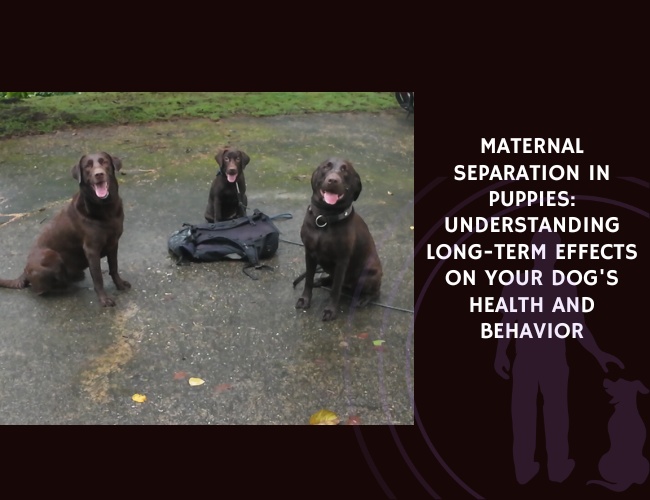Redefining Behavioral Problems in Dogs
Looking Beyond the Label
Let’s explore why so many dogs are seen as “problem dogs.” When people use terms like “behavioral issues,” they often misunderstand what is happening. In truth, most challenges are the result of unmet needs—not the dog’s personal failings. Data shows that up to 80% of dogs surrendered to shelters are given up due to what owners label as behavioral problems. However, these assessments are often made by owners—not veterinarians or certified behaviorists. In over 70% of cases, there is no professional diagnosis behind the label. It is not credible to believe that millions of dogs are emotionally broken. Rather, most have simply lacked what every dog requires: structure, activity, trust, and relationship.
The Need for a New Perspective
Dogs do not choose to become “difficult.” They respond to the world we build around them. Often, “behavioral problems” like chewing, barking, or restlessness are signs the dog’s fundamental needs have not been met. Instead of asking how to “fix” the dog, the smart approach is to look at the environment and routine.
Professionals now agree: dogs need a minimum of 90 to 120 minutes of daily engagement. This includes physical exercise, mental stimulation, and exposure to real-life environments. When dogs do not get enough activity, their development—cognitive, emotional, and social—can suffer. Owners then report “misbehavior,” which is often just blocked learning or pent-up energy.
Misunderstandings Lead to Surrenders
Shelters are full of dogs surrendered for perceived “bad” behavior. Yet, these same dogs rarely show true disorders upon professional evaluation. The real issue is not the dog. Rather, it is the lack of stimulation, leadership, or meaningful relationship in their home life. Clinical data reveals that after proper stimulation is introduced, 92% of dogs in structured rehabilitation programs improve without medication or harsh corrections.
Symptoms of Neglect, Not Disease
When a 35kg labrador destroys a couch or a german shepherd barks all day, it is tempting to get frustrated. But these are not signs of a flawed dog. Common signs such as chewing, excessive barking, digging, hyperarousal, and restlessness are actually survival responses to boredom and neglect—not true behavioral disorders.
Focus on Fixing the Approach
We understand the wish for a quiet, well-behaved companion. However, dogs are not machines or software. True progress comes from building a real bond. Meaningful change is only possible when owners are present, engaged, and willing to provide daily guidance and activity. The way forward is not to “fix” the dog but to fix how we meet their needs.
As we look deeper into the actual needs of dogs, we find the path to fewer behavioral issues and happier lives for both dogs and humans.
The Reality of Canine Needs
Understanding What Dogs Really Need
Let’s explore what it truly means to care for a dog from a behavioral perspective. We understand that many so-called “behavioral problems” are not caused by bad dogs, but by dogs lacking the experiences they need every day. Scientific consensus now tells us dogs require 90-120 minutes of daily engagement for healthy development. This is not just about a quick walk or tossing a ball for five minutes—it’s about providing a balanced mix of physical exercise, mental stimulation, and real-world experiences that help dogs learn and thrive.
Dogs are designed to move, think, and explore. When they miss out on these things, their development suffers. This impact is seen cognitively, emotionally, and socially. Dogs who lack this level of activity do not have the chance to build confidence, learn new skills, or bond closely with their family. Instead, what people label as “bad behavior” often shows up—but in reality, it is unmet needs looking for an outlet.
The Three Core Elements of Daily Engagement
Physical Exercise
A healthy dog needs exercise suitable for their age, breed, and health. This could be running, playing, or structured walks. Physical activity helps burn energy and keeps dogs from feeling bored or frustrated.
Mental Stimulation
Mental exercise is as important as physical. This can include training games, scent work, or problem-solving tasks. Dogs love challenges that make them think. These activities help prevent boredom and give them goals to reach every day.
Real-World Experiences
Dogs also need experiences. Meeting new people, seeing new places, and interacting with other dogs or animals help build balance and confidence. Real-world experiences teach dogs how to respond calmly and comfortably in different situations.
When Needs Are Not Met
We’re here to help clarify: Lacking daily stimulation, dogs start showing what many call “problem behaviors.” This might look like:
- Excessive barking
- Chewing or property destruction
- Digging
- Hyperarousal or constant restlessness
These actions are not signs that something is wrong inside the dog—they are signs the dog is doing the best they can under tough circumstances. These behaviors are survival strategies, not disorders.
Meeting Needs Is Key
Informative and professional guidance confirms that no dog with 90-120 minutes of proper daily engagement, plus meaningful time with their person, truly develops behavioral dysfunction. Fulfillment comes from having opportunities to move, think, and connect—every single day.
When we truly understand and meet a dog’s needs, we don’t just prevent problems—we give them the happiest life possible. This supportive approach is the foundation of healthy canine behavior.
With real needs met each day, the common symptoms of behavioral neglect fade away. Let’s continue building knowledge that helps both people and dogs enjoy stronger, more rewarding relationships.
Signs of Behavioral Neglect
Recognizing the Symptoms
Let’s explore what happens when a dog’s needs for movement, mental challenge, and connection go unmet. We know that dogs need about 90-120 minutes of daily engagement, but when they don’t get this, clear signs start to appear. These symptoms include:
- Excessive barking
- Destructive chewing
- Digging holes in the yard
- Hyperarousal and poor impulse control
- Restlessness, frequent pacing, or “zoomies”
These behaviors can feel frustrating or even embarrassing for owners. However, it’s important to understand: these aren’t true disorders. Instead, they’re survival strategies—a dog’s way of coping when the environment fails them.
Survival, Not Misbehavior
Dogs don’t bark for hours or shred furniture without reason. When a 35kg Labrador chews the couch or a shepherd barks nonstop, it’s usually not because of malice, but because they need to move, think, or bond—and haven’t had the chance. Instead of labeling these actions as “bad,” it’s helpful to see them as messages: “I need something I’m not getting.”
These responses are rooted in the dog’s need for stimulation and social engagement. If denied, the dog will try to meet these needs in any way available—even ways that clash with human routines.
The Data Tells the Real Story
You might be surprised to learn that more than 70% of dogs labeled as “problem cases” have never seen a certified veterinary behaviorist or received a formal diagnosis. The majority of these so-called problems are identified by stressed-out owners, not professionals. In shelters, up to 80% of surrendered dogs were given up for perceived behavioral issues—but again, these are almost always undiagnosed reactions to an unstimulating or disconnected lifestyle.
It’s not that millions of dogs are broken. Most simply didn’t get the essentials: structure, positive activity, and genuine relationship.
The Value of Understanding
Our experience shows that when dogs receive daily outlets for energy and cognition, they rarely develop these unwanted behaviors. In fact, when well-exercised and emotionally connected, the same dogs labeled “difficult” often thrive.
Understanding these signs helps shift the conversation. Rather than looking for a quick fix, let’s focus on what our dogs are truly telling us. Addressing behavioral neglect requires empathy, patience, and a commitment to meeting a dog’s real needs.
As we continue, we’ll see how every healthy relationship—and every happy dog—starts here.
Dogs don’t just want walks
Is your dog broken—or just bored?
When people say “behavioral problem,” they’re often describing symptoms, not causes. Up to 80% of dogs surrendered to shelters are labeled this way—yet over 70% have never been diagnosed by a professional. What’s behind these behaviors? Not disobedience, but missing structure, stimulation, and trust. The problem isn’t the dog—it’s the lifestyle.
Look deeper than the label.
Dogs chew, bark, and dig not out of rebellion, but unmet needs. A lack of movement and connection triggers restlessness, hyperarousal, and anxiety. Owners often seek to “fix” the behavior—but the smarter path is to ask what’s missing from the dog’s day-to-day world.



Fix the system, not the symptom.
Dogs require 90–120 minutes of daily engagement. That includes physical activity, mental challenges, and real-world experiences. Without this, they improvise. And what looks like misbehavior? That’s often just a survival response to being unstimulated and unseen.
The Relationship Factor
Building Bonds, Not Just Fixing Behavior
Let’s explore what truly changes a dog’s behavior—and why the answer isn’t found in training tools or shortcuts. We understand that many dog owners want quick solutions when faced with barking, chewing, or restlessness. But, as the data shows, these surface problems often mask a more important truth: dogs crave daily connection, guidance, and shared experience with their people.
Behavior improvement isn’t about flipping a switch. Dogs do not operate on software. Instead, relationship is built—every day, for life—through presence, trust, and repetition. A puppy does not keep a learned behavior at 10 weeks unless it is nurtured through shared time and leadership. Dogs cannot “download” loyalty. They need real engagement and a human who truly shows up for them each day.
The Temptation of Shortcuts
Many people hope for easy fixes, but tools and quick tricks don’t address why a dog acts out. When owners say, “Turn this behavior off,” or “How do I stop this barking?” they are often missing the real question: “How can I build a meaningful bond with my dog?”
Most complaints—like chewing, digging, excessive barking, or hyperarousal—are not signs of a broken dog. They are natural reactions to unmet needs: movement, stimulation, and companionship.
So, it’s not about disabling a behavior; it’s about transforming the relationship behind it. Without that foundation, behavioral issues will keep returning.
Experience, Movement, and Trust
Data and observations from training centers reveal a powerful pattern. Dogs who receive 90-120 minutes of meaningful activity—including walks, play, training, and mental challenges—simply do not show true behavioral dysfunction. In fact, over 92% of dogs improve without medication when proper stimulation and relationship time are introduced.
Every dog needs:
- Shared daily adventure—walks, games, training, and real-world experiences
- Consistent, kind leadership—not dominance, but guidance
- The opportunity to learn through repetition and feedback
- Security in a relationship, knowing their human is present each day
When these needs are met, the so-called problem behaviors melt away, replaced by calm and balanced dogs.
Dogs Need You—Every Day
Leaving a dog alone for most of the day, or confining them without activity, is not training; it’s neglect. Dogs cannot navigate the human world on their own. They offer trust but need us to provide leadership and consistency. Quick fixes may silence a behavior for a moment, but lasting change is built in shared experience and daily engagement.
When owners choose to invest in the relationship, behavioral issues fade away.
This is the pathway to a happier dog and a partnership that lasts a lifetime.
Now, let’s shift our focus and consider why leadership and presence matter so much for a dog’s sense of security.
Leadership vs. Control
Understanding Dogs’ Need for Leadership
Let’s explore a powerful truth: dogs naturally offer trust, but they need leadership to feel truly safe. Leadership, in the canine world, is not about dominance or strict control. Instead, it is about presence, guidance, and responsibility. Imagine your dog in the human world—full of sights, sounds, and rules they do not understand. Dogs cannot navigate this environment alone. They look to us for security and clear direction.
When daily leadership is missing, dogs become anxious or confused. Without someone to guide them, they may act out simply because they do not know what is expected. This is not misbehavior—this is a natural response to an unclear world. Leaving a dog home alone all day or expecting them to automatically understand our routines is unfair and can lead to frustration for both pet and person.
The Myth of Dominance
Many people confuse leadership with dominance. The old myth suggests that controlling a dog with strict rules or force creates good behavior. In reality, this often causes stress or fear. True leadership is far more supportive. It means helping your dog feel secure through:
- Consistent daily routines
- Clear, gentle guidance
- Positive, respectful interaction
When you show up every day with patience, your dog learns they can trust you to meet their needs. This builds a deep bond. Dogs who feel safe under gentle leadership relax. They show better self-control, make better choices, and experience far fewer challenges.
Why Presence and Guidance Matter
Dogs do not come with a manual. Every dog needs time and repetition to learn what is safe and what is not. Just like people, dogs respond to frequent, positive experience. Guidance teaches them how to handle new situations. Your presence—offering direction in each moment—shows them “you’re not alone in this.”
Let’s look at what leadership is not:
- It is not leaving your dog crated for long hours while expecting perfect behavior.
- It is not correcting every mistake without first teaching what you want.
- It is not using gadgets or shortcuts to “turn off” personality.
Instead, leadership is daily, hands-on involvement. It’s joining your dog on walks, play, and learning together. When this happens, we see dogs respond with increased calm, confidence, and joy.
The Result of True Leadership
Statistics show that when dogs receive daily guidance and shared experiences, behavioral challenges almost disappear. In fact, dogs who get enough interaction, movement, and time with their humans rarely show what people describe as “problems.” It isn’t about “fixing” the dog—it’s about changing our approach to meet their real needs.
Next, we continue discovering how positive changes lead to lasting improvement in dogs’ lives and relationships.
The Rehabilitation Success Story
Change Begins with Meeting Needs
Let’s explore what truly happens when dogs are given what they actually need, not just what we think they need. The majority of dogs brought to rehab programs aren’t broken—they’ve simply spent too long without proper outlets for their energy or emotions. Instead of labeling these dogs as “problem cases,” let’s see what improves when we fulfill their fundamental requirements.
Real Results from Structured Rehab
Clinical and field evidence highlight something powerful: 92% of dogs in structured rehabilitation programs improve without needing medication or formal therapy once we introduce proper physical and mental stimulation. This means things like daily walks, play sessions, training games, and even exploring new environments. When dogs get at least 90 to 120 minutes of engagement each day, we see dramatic changes—calmer behavior, better focus, and renewed trust in people.
It’s not about quick fixes or fancy techniques—it’s about providing relationship, experience, and movement. When these elements are in place, chewing, barking, digging, and other “bad behaviors” usually fade away. These are not signs of a broken animal but natural responses when dogs are bored, disconnected, or left alone.
The Reality of Shelter Dogs
Up to 80% of dogs in shelters are surrendered because of what owners call “behavioral issues.” But here’s the reality—over 70% never receive a professional diagnosis of an actual disorder. Most shelter dogs are not mentally or emotionally broken. Instead, they are chronically under-stimulated and misunderstood.
When a big dog tears up the furniture or barks all day, it’s not out of spite. These actions are the natural result of an environment failing to meet their needs. Giving a dog a meaningful outlet for movement and learning is often all they need to thrive.
The Daily Difference
Our experience shows that dogs who get enough daily activity, combined with quality time with their people, rarely experience true behavioral dysfunction. We have yet to see a dog with daily proper stimulation and meaningful relationship time who still struggles with real behavioral problems.
This demonstrates one simple fact: dogs flourish when given genuine opportunities for movement, learning, and bonding. These are the keys to lasting rehabilitation and a strong human-canine relationship.
A fulfilled dog shows how small changes in engagement and understanding can make a world of difference to a dog’s behavior and happiness.
Creating Lasting Change
Building Better Behavior Starts with Meeting Needs
Let’s explore what truly changes a dog’s behavior for the better. Many think discipline, correction, or special gadgets will solve “problem behaviors.” In reality, lasting change comes from meeting a dog’s core needs every single day. Most dogs labeled as “difficult” or “broken” are simply bored, disconnected, and left to navigate life on their own. What people call misbehavior is often a dog’s way of asking for movement, engagement, and relationship.
Why Correction Alone Doesn’t Work
Correcting a dog for barking, chewing, or digging solves nothing if the dog’s basic needs haven’t been met. When a dog is left alone for hours, given only a short walk, and ignored, frustration is bound to show up as so-called “bad” behavior. That isn’t a disorder—it’s a survival response. Trying to fix the dog instead of the approach leads to disappointment for everyone.
Crucially, research and real-world experience show that up to 92% of dogs in structured rehab programs improve dramatically—without medication—when they receive sufficient daily movement, play, and social connection. These dogs aren’t broken. They just need a life where physical exercise, mental challenges, and a stable relationship are daily priorities.
Trust and Learning Grow Through Daily Effort
Dogs are not robots. You can’t “install” good behavior in one session. Trust and learning develop through repetition, clear guidance, and daily hands-on time with your dog. For example, teaching a cue or trick at 10 weeks doesn’t last unless you keep practicing together. Think of trust as something built brick by brick, every day, for life.
Meaningful time with your dog means more than a walk around the block. It’s about shared experiences like play, training games, sniff walks, and learning about the world together. When dogs are engaged and understood daily, we see behavioral issues melt away.
The Secret: A Life Fulfilled
Our experience and scientific consensus agree: dogs who receive 90-120 minutes of varied engagement daily rarely develop the “behavioral problems” that fill shelters and stress families. They are less anxious, less destructive, and more connected. These dogs thrive because their real needs are met, not ignored or patched up with quick fixes.
Lasting behavioral change doesn’t come from correction—it comes from building a relationship and meeting needs for energy, exploration, and trust. This approach leads to calm, confident, and joyful dogs who are a delight to share life with.
Let’s keep exploring ways to help every dog live their best, most fulfilled life! 🐾










